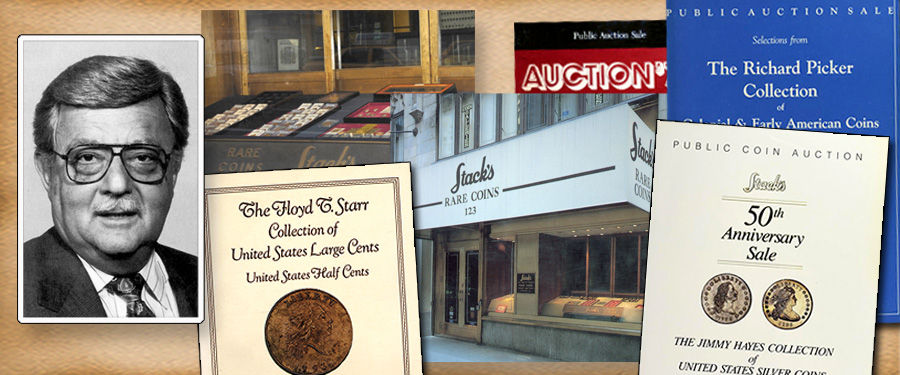
The year of 1986 brought
two changes that would be very influential to the hobby’s future: advances in
professionally-run grading services and the increased scale of the United
States Mint’s involvement in numismatics.
In 1986 PCGS began
providing grading and encapsulation services (followed the next year by NGC),
forever changing coin collecting. Grading and authentication already existed in
an attempt to weed out counterfeits, as well as altered, doctored, polished and
mislabeled coins. The new companies greatly expanded the practice, sealing the
coin in a plastic holder (slab) that protected the item from further damage and
had a numerical grade permanently attached to the holder and, thereby, to the
coin. This gave numismatists, especially those who were entering hobby with
little experience, confidence in what they were buying.
The professional
grading services used a system originated by Dr. William Sheldon in 1949 for
evaluating United States large cents, which combined adjectival grading (in
shorthand form) with numbers on a scale that ran from 1 to 70. This system came
to be used for other denominations, but early on there was little consistency
to how it was applied. As noted earlier in this story, in the 1970s the
American Numismatic Association brought together a large group of professional
numismatists to try to create a more standardized and useful grading system. While there were, of course, differences in
opinion and constant discussions it was announced that the Sheldon system would
be adopted with some modifications and its use would be expanded to all series.
With support from the Guide Book of United States Coins which would use
the new grades, they also asked professionals within the hobby to add this system
to their grading expressions.
Here is a sample of the upper grades:
VF-30 for VERY FINE
VF-35 for CHOICE VERY FINE
EF-40 for EXTREMELY FINE
EF-45 for CHOICE EXTREMELY FINE
AU-50 for ABOUT UNCIRCULATED
AU-55 for CHOICE ABOUT UNCIRCULATED
MS-60 for MINT STATE or UNCIRCULATED
MS-63 for CHOICE MINT STATE or CHOICE UNCIRCULATED
MS-65 for GEM MINT STATE or GEM UNCIRCULATED
MS-70 for a PERFECT New Condition MINT STATE
Of course, no
numerical system, even with adjectival grades included, could take everything
into account, including strike, luster, eye appeal, toning and other particular
aspects of a coin. Often further words were needed to actually describe what a
coin looked like and what special qualities it had beyond the level of wear.
Over time the “numerical” ratings would be expanded, especially at the upper
end of the scale so that every number from 60 to 70 would be used in
conjunction with MS (or Proof) and, eventually, even those numbers would be
subdivided using a star or plus sign. But in 1986, those developments were long
in the future.
The ANA founded ANACS (American Numismatic Association Certification Service)
where coins could be sent for grading and authentication. ANACS would
photograph the coins and return them, graded to the sender. As discussed
earlier, problems quickly arose with this system, including switching documentation
to inferior coins and a great deal of resubmissions, some that were reflected
in the census of graded coins and some that were not. With the advent of sealed
plastic slabs, the market changed again although, of course, it could not solve
all grading issues. As always, even improvements to the system could not stop
individuals who were committed to finding a way to work around the system for
their own benefit.
As newer systems
were put into place, the debate over grading continued (and does to this day).
Experienced collectors and dealers trusted their own opinions and often opted
to continue the original methods of grading that had developed over the past
century. Resubmission continued to be an issue, as individuals attempted to get
“upgrades,” a situation that affected census listings in all areas. And as
grading itself is subjective, not scientific, there was always the judgement of
the graders to keep in mind.
But, while it may
not have been clear in 1986, change was coming and professional grading and
encapsulated coins were the future of American numismatics. Auction companies
and retail dealers who had adjusted to using the ANA grading system earlier now
adjusted to professional third-party grading, although it did not happen
overnight. Everyone from beginning collectors to experienced dealers needed to
learn more about the situation and the ANA, PNG and other organizations tried
to provide education, through seminars and at coin shows or club meetings.
Change can be difficult and it seemed that a slow down developed and the
overall economic growth of the hobby seemed to falter. It took some time for
numismatics to adjust and for activity to expand again.





